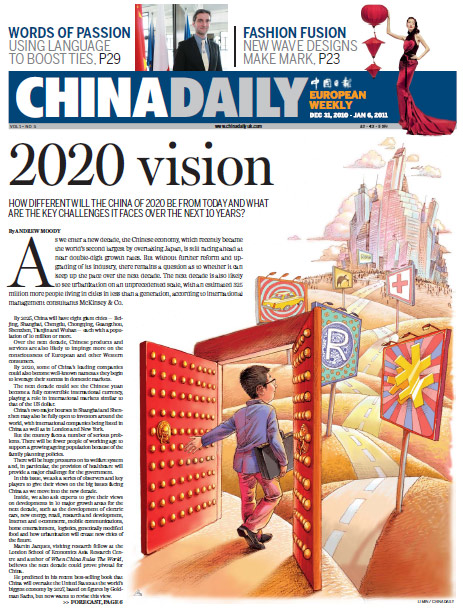A bridge over troubled waters
Updated: 2010-05-28 07:58
By David Shambaugh (China Daily)
Editor's note: The second S&ED, thus, can be considered a relative success. The process itself was a full success, the announced outcomes less so.
The second US-China Strategic and Economic Dialogue (S&ED) ended a couple of days ago and the 200-strong American delegation has left Beijing after two days of intensive talks with their Chinese counterparts. How should we judge these important talks?
First, after a long winter of difficulties, the S&ED was for China and the US another step - a very important step - toward coordinating efforts to stabilize and improve bilateral relations. The talks followed an exchange of visits by senior officials, presidential telephone calls, President Hu Jintao's presence at the Nuclear Security Summit (and a lengthy private discussion with the US president), Barack Obama's meeting with new Chinese ambassador Zhang Yesui, the postponement of the US Treasury Department's report on the yuan, and China supporting a new round of sanctions against Iran. Each step added momentum to bilateral ties after a period of significant strain.
Second, the sheer size of the S&ED is unprecedented in any bilateral relationship. No two governments have ever met across such a wide range of bureaucracies to discuss the totality of issues affecting bilateral relations.
|
||||
Third, the impressive scope and range of issues on the S&ED agenda are a reflection of the complexity of Sino-American ties today. The relationship operates on three levels: bilateral, regional, and global. The two days of intensive discussions covered individual issues at all the three levels.
To progress in cooperation, the China-US relationship has to engage in an incredibly broad and long agenda. It's true that agreements and identical views on all (or even most of) the issues will be illusive, because the two governments still have very different national and international interests, worldviews, values and political systems. But unless all the issues are placed on the table, the relationship cannot mature fully and forge cooperation.
Fourth, we should remember that the S&ED is a forum for dialogue, not negotiations. It is intended to place China-US ties in macro perspective, not necessarily to negotiate and agree on specific issues. Though this kind of wide-ranging dialogue is necessary, the two sides should seriously consider forming a series of joint working groups that function throughout the year to address specific subjects and thus pave the way for agreements that the S&ED would approve and implement.
To some extent and in some sectors such mechanisms already exist such as the Joint Commission on Commerce & Trade (JCCT), the new US-China investment forum, and about 60 other bilateral dialogue mechanisms. But apart from the JCCT, the other mechanisms are episodic and do not function throughout the year as real intergovernmental working groups could.
Fifth, while dialogue is the principal goal of the S&ED, we could still ask: What actual agreements emerged and how much progress was made at this year's meeting? We cannot immediately know all the progress made, because actions prompted by the S&ED will be taken subsequently (particularly by China) and Beijing does not wish to tie them directly to discussions with the US. This is the likely case with the yuan revaluation issue.
Paper's Digest

Convertible yuan
The yuan is likely to be fully convertible and on the way to being one of the world's major currencies by 2020.
Fight against inflation
Words of passion
Euro vision
Specials

Internet aids luxury sales
More sophisticated Chinese consumers are surfing for luxury products on the Internet and a number of branded labels are ready to ride the wave.

Tobacco controls
An anti-smoking watchdog has criticized Chinese authorities for "making little progress" on enforcing tobacco controls.

Godfather of yachts
Traugott Kaminski claims he was the first person to bring the yacht culture to China seven years ago.



